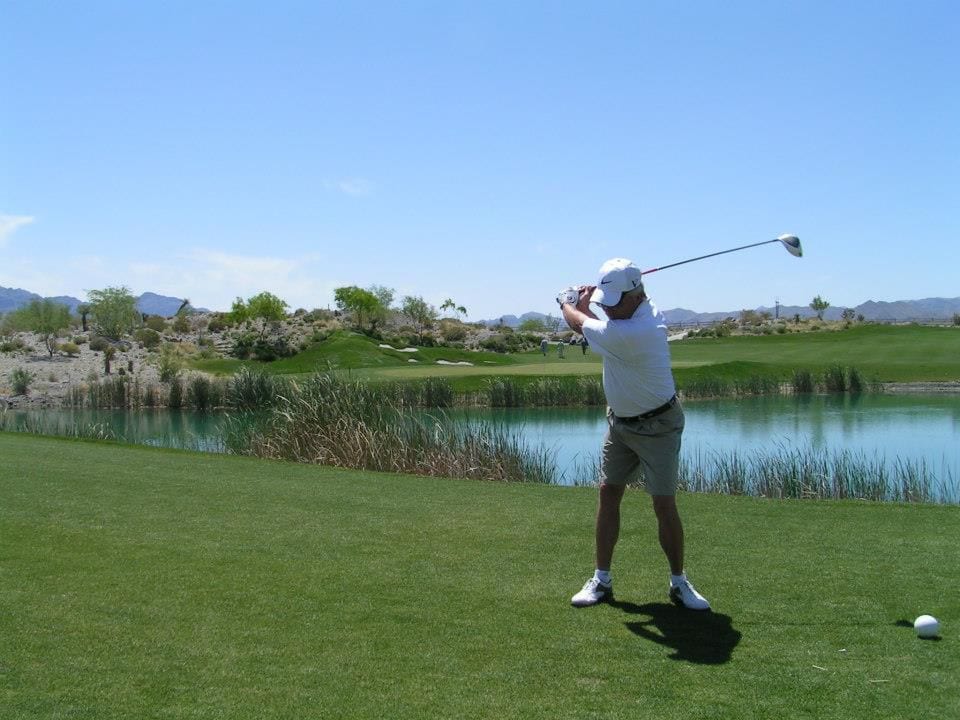
How many of us can honestly say we’re getting better with age, at least if we’re talking about lowering our handicap? I believe age is relative. We’ve all heard the expression, “You’re only as old as you feel,” but is that true when it comes to playing golf? For me, at least, it’s very true. I’ve started paying close attention to the seniors on tour and my retired partners. Why is it that some us get better with age while others do not? For most, it’s due in part that we play more golf as we pack up our 9 to 5 jobs and retire. We have more time and, hopefully, more of that green stuff set aside to play. I’ve been playing this game for over 40 years now. In my full-time productive years, raising kids and fulfilling my domestic duties, I was lucky to play maybe two or three times a month on a league or with friends. At my best, I was a 12 handicap and stuck there for over 10 years, fluctuating by maybe one or two strokes each year. Now, I’m playing an average of two to three times a week and have a 3.4 handicap! How did that happen in less than five years? Playing more is definitely one reason, but I believe there are several other reasons that could attribute to such an unusually quick turn around.
Pay attention to the basics
My grip pressure and takeaway and effective stretching are by far the most important aspects of my ability to swing a club more consistently and with almost as much power as I had at 30 years of age. “Grip ‘n’ rip it,” to me, always meant, “hold it like you’re squeezing the life out of a snake.” That is the kiss of death in so many ways to a positive outcome. At address, maintain a pressure similar to that of holding a hummingbird. You wouldn’t want to kill the little guy, so don’t squeeze your grips till they compress, especially the right hand if you’re right handed. As a right-handed golfer, I’ve found that holding my left hand slightly tighter than my right produces a longer, straighter, and more consistent shot. After a split-second pause at the top, I begin my downswing. Hips release, hands descend, and my club head follows. My grip naturally tightens a bit more at impact, and I finish with a full-flowing rotation that feels relaxed. Stretching before you take your first swing shouldn’t be an afterthought. Stretch for at least two or three minutes at the beginning of your warm-up. It’s important no matter if you’re 20 or 60. Just do it!
Watch the pros in a different light
Something else I’ve been doing for the past three or four years is studying the pros’ takeaways. It’s easier to see the ladies’ takeaway than, say, a Rory or Dustin. Don’t try to imitate, but rather duplicate with your own ability and flexibility to produce a similar look, if that makes sense! It’s more about tempo and where their hands are through a complete backswing to impact. It seems to me that they focus on how their hands start and finish. Check out how close their hands are to their torsos. At address, their hands are right at or just outside their toes. Stop watching the club head. If you imagine an invisible tracking arch, their hands remain on that line from beginning to impact with a full-flowing finish. Keep it as simple as possible. As we age, we lose flexibility, so shorten your backswing if necessary to avoid bending your left elbow. Watch the pros more closely yourself to see if it helps you visualize your perfect swing. Watch their hands!
Visualize your past good shots
Some days, golf seems effortless, while others create enough drama to fill a four-hour soap opera. Billy Casper said it best when I interviewed him a little over a year ago. He was asked by several hopeful web.com players and aspiring professional golfers at the Mesquite Open, “What is the most important swing thought they needed to compete on tour?” Billy simply replied, “You already know how good you are or you wouldn’t be here. Visualize the great golf swings you’ve had on the practice range and while playing and hit the shot.” Just remember how good it felt and duplicate that positivity and happiness, no matter what the outcome. Like I said in the previous paragraph, it’s all about keeping it simple. What could be simpler than replaying a good shot and the great feeling in your mind, body, and spirit and then just hitting the ball? You eliminate bad thoughts and focus only on positive outcomes, which researchers agree enables better focus. It won’t play out that way all the time, but if you’re focused and committed to every shot without hesitation with a positive thought, you’ll play better golf and remain a whole lot happier throughout the day! Be patient with yourself, and accept the results, good or bad.
Read about techniques and drills from several PGA professionals
Ask yourself, did I learn anything about my swing today on the practice green or driving range or was I only focused on the results? Teaching pros have a tremendous amount of information and drills that you can learn from. You know where your weaknesses are, now seek out those drills and lessons from not one but several instructors. Utilize the ones that make sense to you. Not everyone communicates in your golf language. We all digest information in different ways. Find the drill or technique you feel is right for you, and go practice it. You’ll be amazed at how quickly you begin to improve. Now, go out and test it to build confidence. I’ve never had a golf lesson, but I have made it a monthly practice of reading golf tips from the best of the best in Golf Digest and Golf magazine—again, just the tips where I need some help. I don’t want to fill my head with something new if it doesn’t address a problem in my game!
I watched the John Deere Classic last month. What a great finish! It was drama the likes of which you’d see in a movie about the underdog two stokes ahead of the No. 2 player in the world on the final three holes on Sunday. The 46-year-old Tom Gillis was attempting to become the oldest first-time winner on the PGA Tour in 20 years. He was two strokes ahead of the nearest competitor, heading into the 16 hole when he missed a four-footer to drop a stroke that would have lead to the win at 21 under. One of those contenders who tied Gillis at 20 under was Jordan Spieth, who eventually won in a two-hole playoff. What a heartbreak on one hand, but what a success story on the other. Here’s a guy who will be turning 47 soon, finally contending on the PGA tour against the world’s No. 2, destined to become No. 1! He had struggled for years with confidence issues and health problems yet bounced from the web.com tour several times to earn a PGA spot once more. I contend that he’s one who’s getting better with age—unlike Tiger Woods—not because of playing more but because he now knows that his swing can hold up under pressure. I watched him shoot a +6 to miss the cut at this year’s Open, but I contend he’ll be one to watch as he enters the senior tour three years from now.
There have been so many others on tour who have also blossomed on the senior tour more so than in their younger days. Maybe it’s because they’ve aged better due to genetics or gotten stronger instead of weaker in mind and spirit. It might be that they’re having more fun rather than being focused on making money to continue their dream. All I know is that I’ve never been better or happier with my golf game than I am today at age 63. Attitude is another important aspect of playing better golf as we age. Have you ever seen a grumpy old man shoot the round of his life? Don’t get me wrong, I enjoy shooting good scores even more! I’ve kept two score cards in a frame in my office. My first par round in 1984 and the first time I shot under 70 on a regulation course. Heck, it took me 26 years to accomplish shooting a par round again! Then, just last month, I broke 70 with a 69 at the Oasis Canyons course in Mesquite. I fully intend to shoot my age one day!
Give these ideas a run for the money and see if they help you. See ya on the links.



